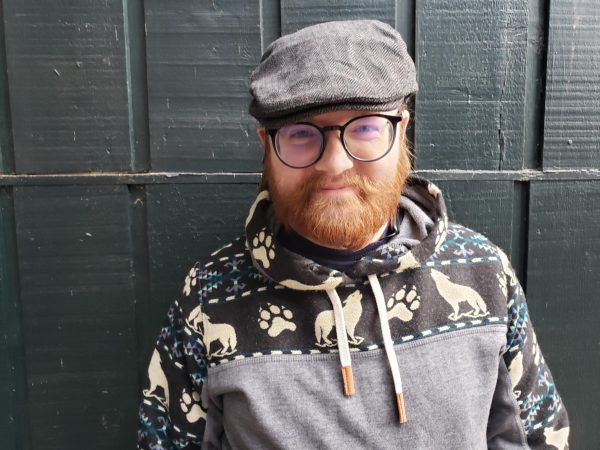NEIU Fine Arts Center Gallery: Where She Comes From
October 18, 2022
Located in the Fine Arts Center Gallery, Where She Comes From, is a new exhibit that will be available to view until Oct. 28. Curated by Pia Singh, the exhibit contains works from five femme artists from India and America that speculate and question how they, and we, perceive our world and where we belong in it. Through a mix of mediums including textile, photography, poetry, sculpture, dance, video, and even vibrations, the artists inspire us to question our origins, to view the world from another’s perspective and to see beneath the trappings of civilization to the purity of nature and culture that history and colonialism has pasted over. These works give a window into what it means to encompass more than one place in both time and space, mind and body.
I got the opportunity to speak to two of the artists and hear stories about their own work. Both are very kind and talented, and have given much thought to the works they have created.
Janhavi Khemka created Sapna, a mixed media piece with charcoal that includes a video and audio-vibrational platform. An observer may remove their shoes and stand on the platform, which vibrates with the audio from the visual. In Sapna, Khemka uses her work to showcase her experience of the world with a hearing disability. Through her work, we can experience a thunderstorm and other parts of her life through touch, as opposed to the audio experience that many of us take for granted. Her piece also shows her experience with sight and how exhausting it can be to rely on it, and the loss of understanding when her concentration slips. Her work speaks to a world of vision, sensation and intense concentration.
Another series of works are by Kushala Vora who displayed photographs mounted on red oak titled Flowers Have No Name. Vora took these pictures in India during the height of the pandemic as a commentary on colonialism. India was once a British colony. Vora’s photographs are of small flowers, mostly ground orchids. Her intent was to show the small things in nature that we put into a box. To show nature in its own form, without the filter of human categorization, as it is supposed to be. She also produced another series Negative Space: man, monkey, queen, quill… wood fired stoneware pieces with images of flowers on them. On the other side, are words in a formal, dotted style, like what used to teach children to write in cursive. This is also a commentary, quite literally, on what has been written over by colonialism. Vora’s work invites an appreciation of simple joys, of the smaller things in life. She asks us to look at these small things, the natural world, not for our own joy, but to enjoy that they exist for their own sake. We should appreciate that we are so lucky to bear witness, and mourne what has been lost in the pursuit of empire and greed.
These two works detailed above, as well as the other beautiful works in the exhibit, inspire us to think in different ways. They allow us a glimpse into worlds on the margins of our experience that embody what it means to be of more than one reality, and yet wholly ourselves. I encourage any of you who read this to go and check it out.








